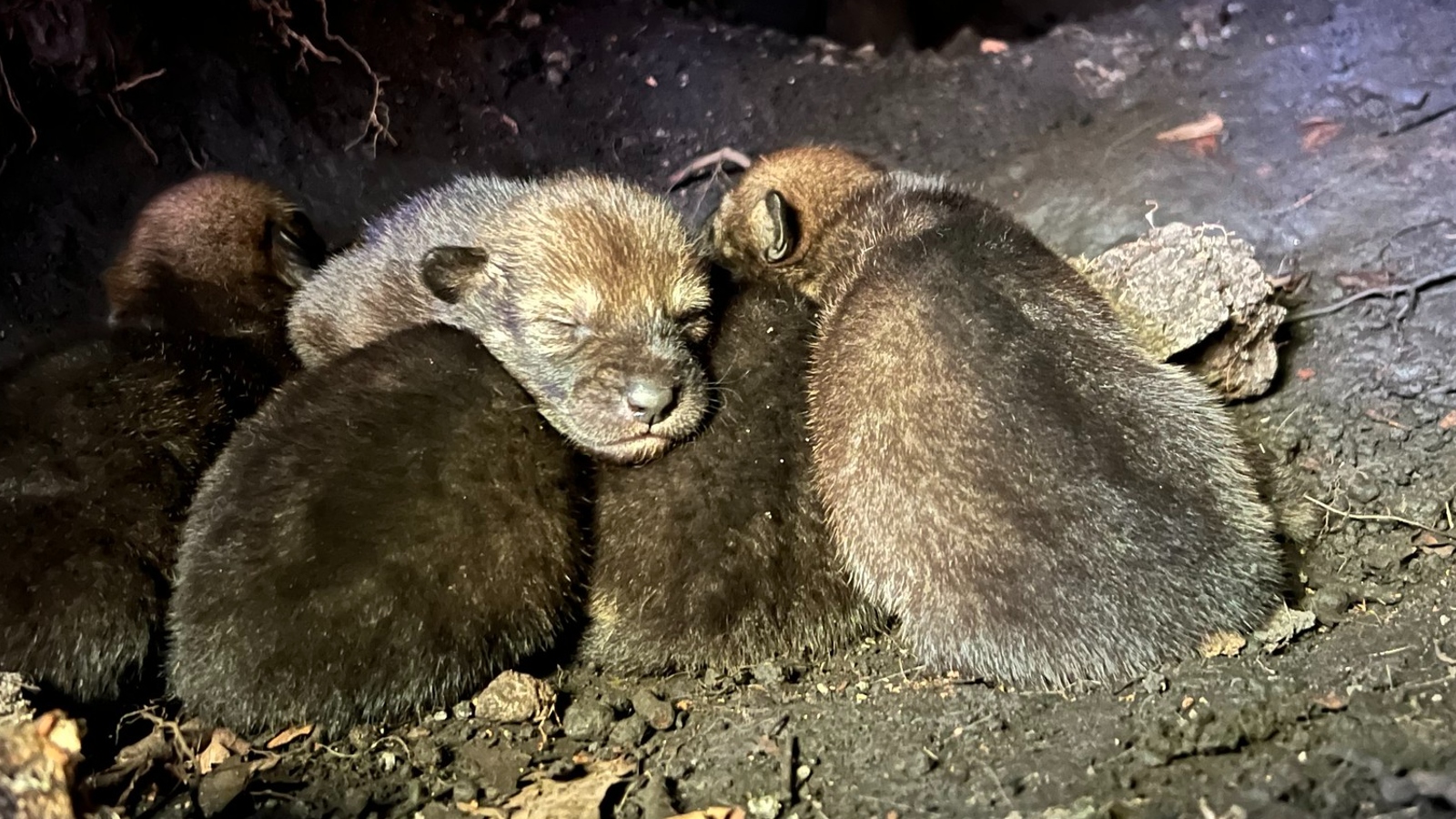Birth of wild red wolf pups brings hope to species on brink of extinction
Five red wolf pups were born in a wildlife refuge in North Carolina and later gained an adopted sibling that was born in a zoo.

An extremely rare litter of critically endangered red wolf pups has been born in the wild for the second time in five years. The wolf parents have also adopted a captive-bred pup into the new brood for the first time, further raising hopes that the species can be saved from extinction.
The litter consists of three females and two males and was born in early April in Alligator River National Wildlife Refuge in North Carolina, according to the U.S. Fish and Wildlife Service's Red Wolf Recovery Program (RWRP). The RWRP announced the news May 10 on Facebook, along with images of the adorable pups.
The mother, known as 2225, and father, known as 2323, had another litter of five in 2022, which were the first documented wild births since 2017. The pups from the 2022 litter have remained with their parents and are expected to help rear their baby siblings, according to RWRP representatives.
Due to the parents' success at raising their first litter — and the added support their first litter will provide — conservationsits were confident that a sixth pup could be introduced into the pack. A few weeks after the litter was born, a male pup, which was born at the Point Defiance Zoo and Aquarium in Washington state, was introduced to the litter and adopted by the parents. This brings the pack to 13 individuals, making it the largest known red wolf group in the wild.
Related: Twin polar bear sisters reunited years after mother rejected one of them

The new litter is "a cause for joy and celebration," RWRP representatives wrote on Facebook. "Every generation yields a newborn hope for [the] recovery of the red wolf."
Red wolves (Canis rufus) are currently listed as critically endangered by the International Union for Conservation of Nature (IUCN) Red List of Threatened Species. There are only between 20 and 30 individuals in the wild, not counting the new pups. The red wolf population lives exclusively in North Carolina, but the canines once roamed the southeast and south-central U.S. in great numbers before being driven to the brink of extinction by hunting, habitat destruction and hybridization with coyotes, according to the Center for Biological Diversity.
Sign up for the Live Science daily newsletter now
Get the world’s most fascinating discoveries delivered straight to your inbox.
There are also around 270 captive red wolves in zoos across North America, according to The Wildlife Society. Continuing to introduce captive wolves into the wild, either by releasing adults or fostering pups into wild packs, will be necessary to increase genetic diversity in the wild and prevent inbreeding, which can lead to genetic conditions that impact survival.
In the future, cloning could also potentially be used to help increase the population of red wolves. In September 2022, scientists in China announced that, for the first time, they had successfully cloned an Arctic wolf pup (Canis lupus arctos), which was born to a surrogate beagle mother. But there are no current cloning projects for red wolves.
Red wolves are not the only U.S. species struggling to survive in a rapidly changing world. In February, NatureServe, a conservation group focused on biodiversity in North America, released a report that revealed up to 40% of animal species and 34% of plant species are at risk of going extinct in the country.
In 2021, the U.S. Fish and Wildlife Service removed 23 species from the Endangered Species Act because they had not been seen in the wild for decades and have most likely gone extinct.

Harry is a U.K.-based senior staff writer at Live Science. He studied marine biology at the University of Exeter before training to become a journalist. He covers a wide range of topics including space exploration, planetary science, space weather, climate change, animal behavior and paleontology. His recent work on the solar maximum won "best space submission" at the 2024 Aerospace Media Awards and was shortlisted in the "top scoop" category at the NCTJ Awards for Excellence in 2023. He also writes Live Science's weekly Earth from space series.










